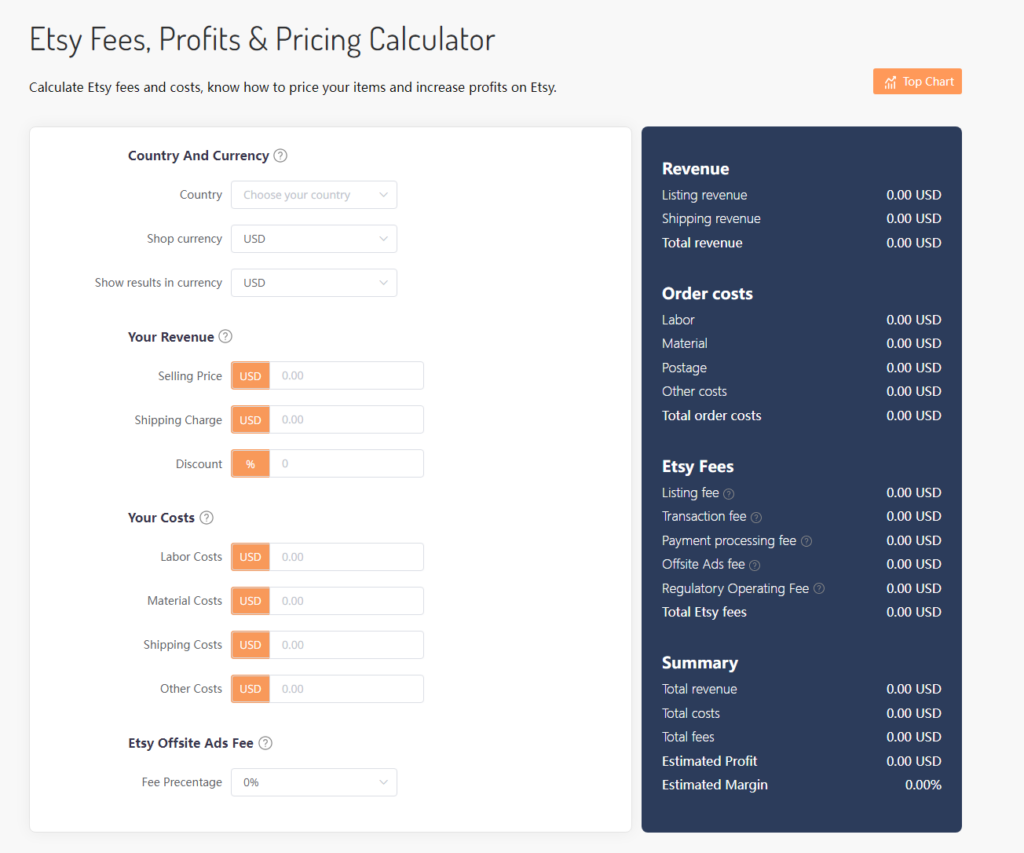As an Etsy seller or someone interested in becoming an Etsy seller, you'll definitely want to understand how much profit you can make on Etsy and how to optimize your prices and costs to increase your profit margins. In this blog, I’ll introduce a very useful tool called the EtsyHunt Calculator, which can help you calculate fees and profits, and provide some practical examples to help you better understand Etsy’s income.

The core formula for Etsy profit calculation is: Profit = Revenue - Expenses - Costs. Among them, revenue refers to the money you get from buyers, including product price and shipping costs. Fees include various fees charged by Etsy, such as listing fees, transaction fees, payment processing fees, and advertising fees. Cost is what you spend to make or buy a product, including raw materials, packaging, shipping and advertising. In order to increase profits, you can optimize from the following aspects:
Increase revenue: You can increase revenue by increasing product prices or shipping costs. Of course, this also requires considering market competition and customer needs, and pricing cannot be too high or too low. Additionally, you can increase your revenue by increasing your sales. This requires improving product quality and service levels and adopting effective marketing strategies.
Reduce costs: You can reduce listing costs by reducing the number of listings. For example, you can use multivariable listings to list multiple similar products instead of listing each product individually. Additionally, choosing the right payment method can also reduce payment processing fees. For example, you can use Etsy Payments to accept multiple currencies and payment methods instead of using PayPal or other third-party services. Controlling your advertising budget and performance can also lower your advertising costs. For example, you can use Etsy Ads to set maximum daily spend and keyword bids, and monitor ad click-through rates and conversion rates.
Reduce costs: You can reduce costs by finding cheaper raw materials and packaging materials. For example, you can buy in bulk or look for discount offers. In addition, optimizing transportation methods and times can also reduce transportation costs. For example, you can use Etsy Shipping Labels to print shipping labels and receive discounted postage. Choosing more effective advertising channels and content can also reduce advertising costs. For example, you can use social media, blogging, email, etc. to promote your products for free or at low cost and increase customer engagement and loyalty.
The EtsyHunt Calculator is a useful tool that helps Etsy sellers calculate fees and profits. It's very simple to use, just enter the following information:
Product Price: The price you plan to sell your product for.
Shipping Fee: The shipping fee you plan to charge.
Cost: The cost of making or purchasing a product.
Shipping Cost: The cost of sending the product.
Advertising costs: Advertising expenses used to promote products.
The EtsyHunt calculator then automatically calculates the following results:
Etsy fees: These include various fees charged by Etsy such as listing fees, transaction fees, payment processing fees, and advertising fees.
Profit: Revenue minus all expenses and costs.
Profit margin: Profit as a percentage of revenue.
You can use the EtsyHunt calculator to compare different price and cost options to find the profit point that works best for you. At the same time, you can also use other tools or methods to further optimize profit margins, as follows:
- Understand market demand and competition: Research the pricing and sales of similar products to understand market demand and competition. This will help you determine a reasonable price range and how to stand out in a competitive market.
- Look for cost-saving opportunities: Review your supply chain and production processes to see if there are opportunities to reduce costs. Negotiate better prices with suppliers, optimize production processes, or find cheaper raw materials and packaging materials.
- Refined pricing strategy: Consider adopting a dynamic pricing strategy to adjust prices based on market demand and competition. You can make pricing adjustments based on factors such as seasonal demand, special promotions, or changes in supply and demand.
- Improve product added value: Improve the quality, function or design of the product to increase the added value of the product. This allows you to set a higher price for your product and attract more buyers.
- Optimize shipping and logistics: Find more cost-effective shipping options, such as striking deals with logistics partners or taking advantage of Etsy’s shipping labels and discounts.
- Regularly review expenses and profits: Regularly review your expenses and profits to identify potential optimization opportunities. You can make adjustments based on data and trends to ensure your profit margins remain at a sustainable level.
In summary, by using the EtsyHunt calculator and other optimization methods, you can better understand your profits on Etsy and take appropriate steps to improve your profit margins. Remember, improving profit margins requires a comprehensive consideration of multiple factors such as price, cost, and market demand.